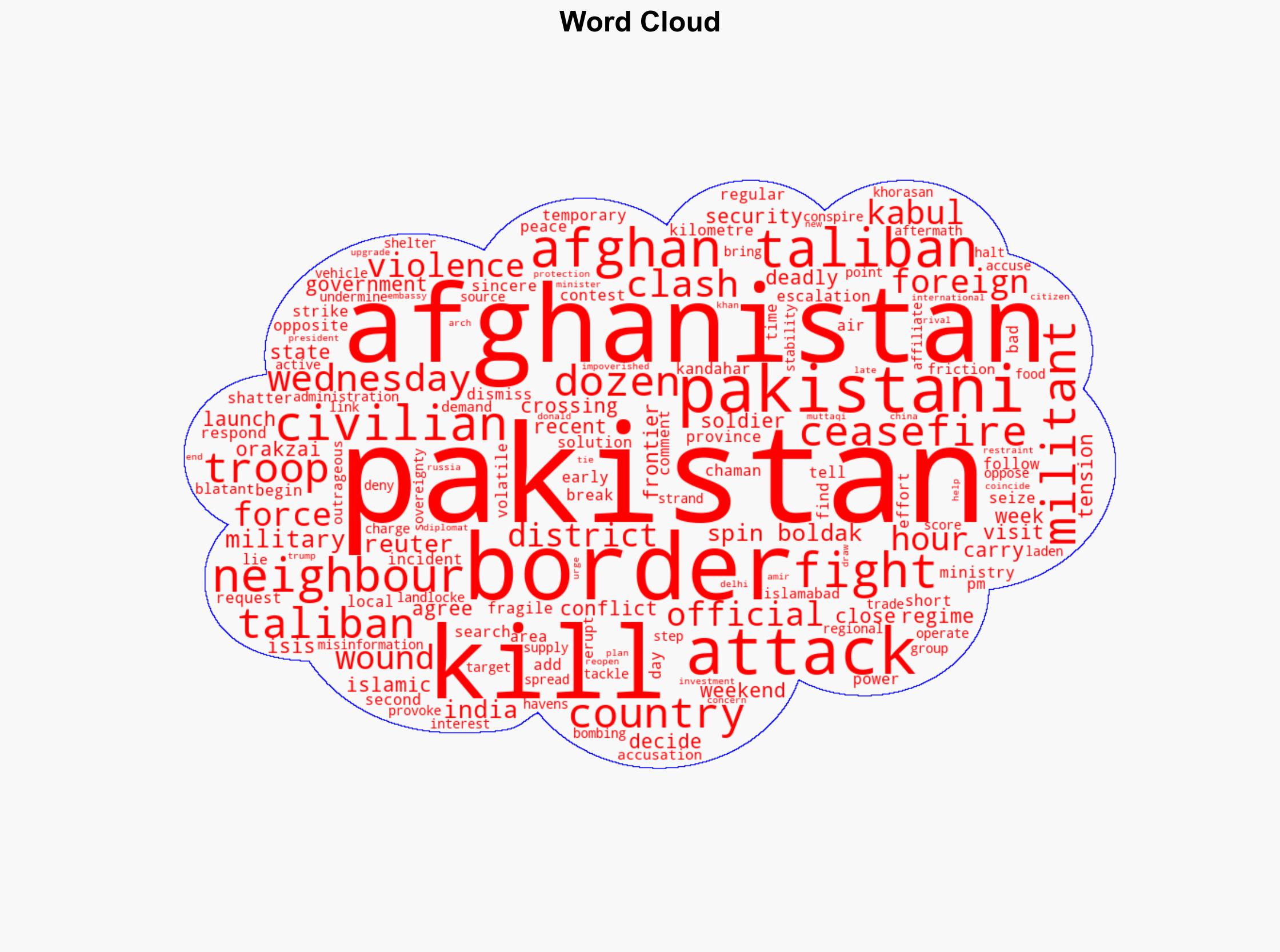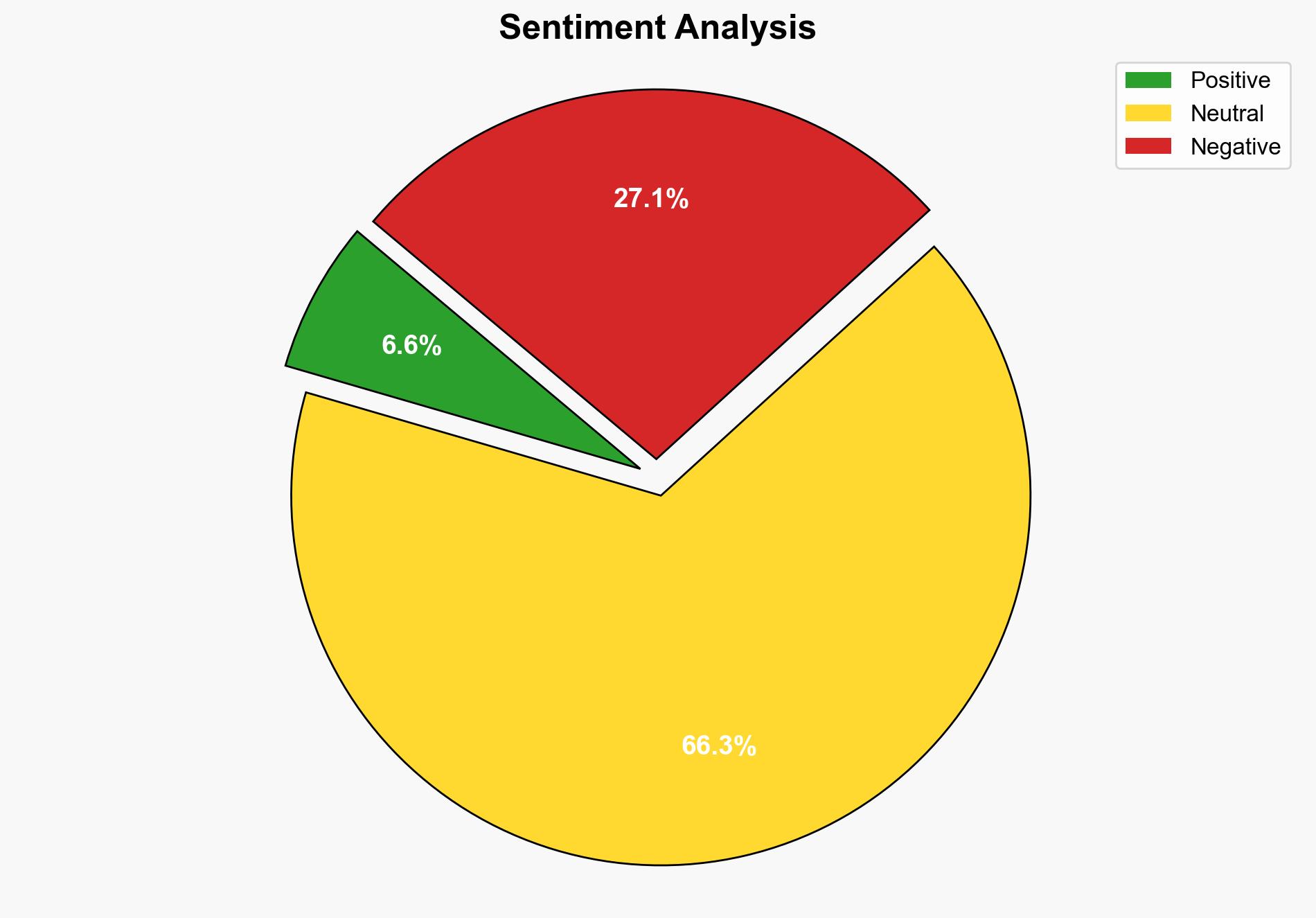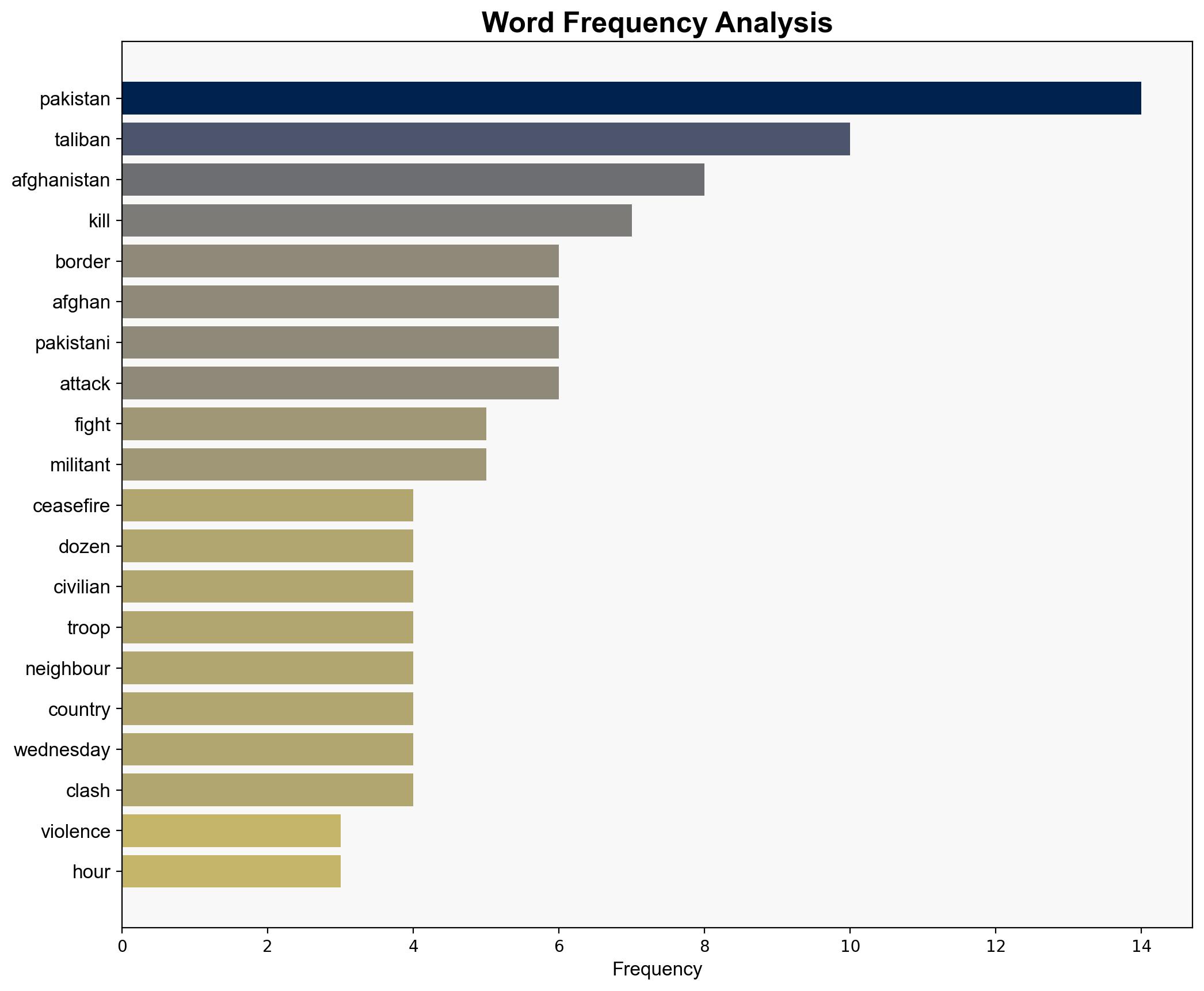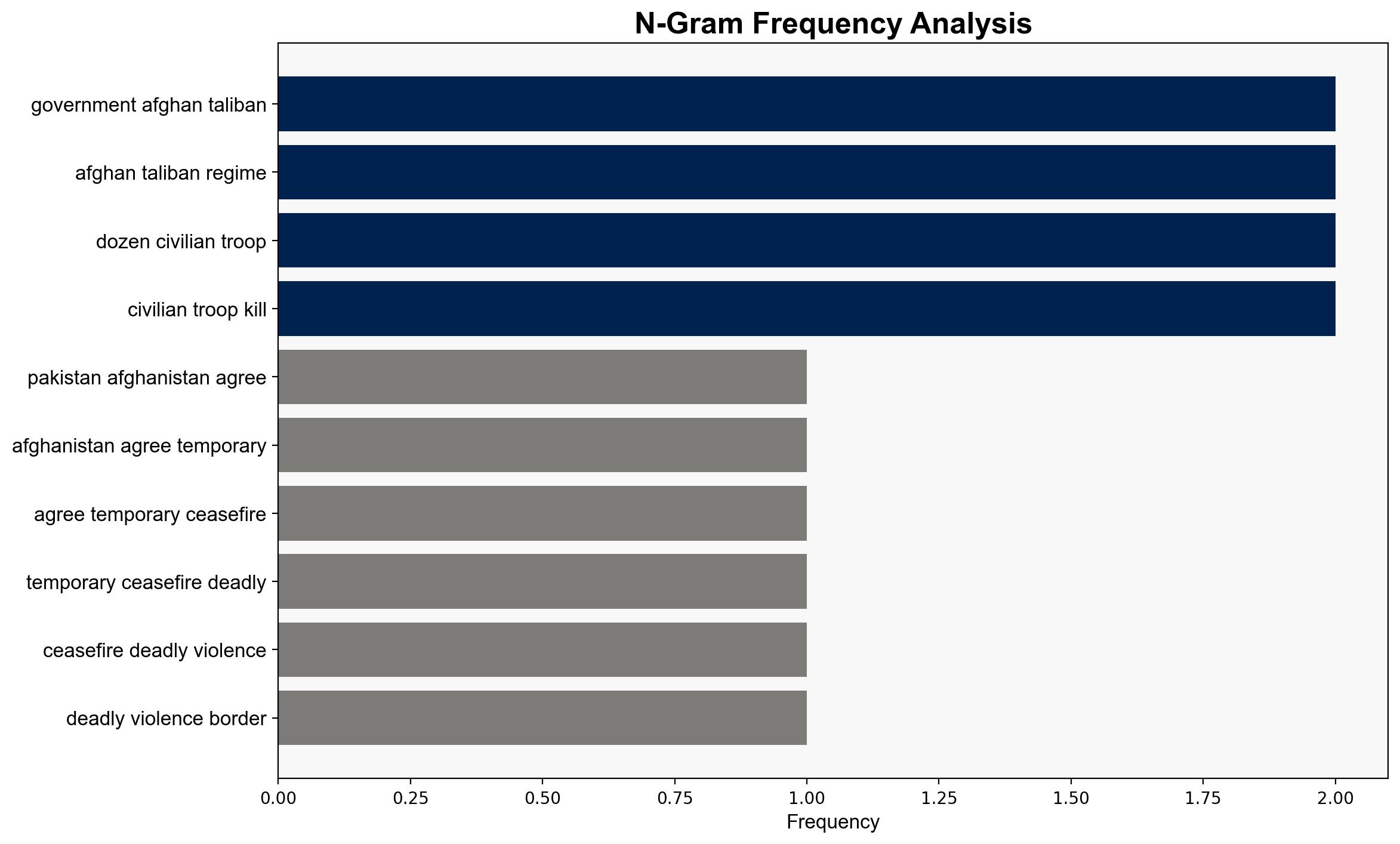Pakistan and Afghanistan agree to temporary ceasefire after deadly violence – ABC News (AU)
Published on: 2025-10-15
Intelligence Report: Pakistan and Afghanistan agree to temporary ceasefire after deadly violence – ABC News (AU)
1. BLUF (Bottom Line Up Front)
The temporary ceasefire between Pakistan and Afghanistan, following recent border violence, is likely a tactical pause rather than a strategic resolution. The most supported hypothesis is that both nations are using the ceasefire to regroup and reassess their positions. Confidence level is moderate due to ongoing tensions and historical patterns of conflict. Recommended action includes diplomatic engagement to solidify the ceasefire into a longer-term agreement and monitoring for potential violations.
2. Competing Hypotheses
1. **Hypothesis A**: The ceasefire is a genuine attempt by both Pakistan and Afghanistan to de-escalate tensions and prevent further civilian and military casualties. This is supported by the immediate need to address international concerns and stabilize the region.
2. **Hypothesis B**: The ceasefire is a temporary tactical maneuver by both sides to regroup and prepare for potential future engagements. This is supported by the historical context of repeated clashes and the strategic interests of both nations in maintaining leverage over border control and security issues.
Using the Analysis of Competing Hypotheses (ACH) 2.0, Hypothesis B is better supported due to the pattern of recurring conflicts and the lack of substantial diplomatic progress towards a long-term resolution.
3. Key Assumptions and Red Flags
– **Assumptions**: Both hypotheses assume that the ceasefire will be respected by local commanders and that there will be no immediate provocations from either side.
– **Red Flags**: The lack of a robust monitoring mechanism for the ceasefire and the potential for misinformation to escalate tensions are significant concerns.
– **Blind Spots**: The influence of external actors, such as ISIS-K, and their potential to disrupt the ceasefire is not fully addressed.
4. Implications and Strategic Risks
– **Economic**: The closure of border crossings affects trade and could exacerbate economic hardships in both countries, particularly Afghanistan.
– **Geopolitical**: The ceasefire’s fragility may invite external powers to exert influence, potentially complicating regional dynamics.
– **Security**: The risk of renewed violence remains high, with potential for escalation into broader conflict if provocations occur.
5. Recommendations and Outlook
- Engage in multilateral diplomacy involving regional stakeholders to extend the ceasefire and address underlying issues.
- Implement a monitoring mechanism to ensure compliance and reduce misinformation risks.
- Scenario Projections:
- Best Case: Ceasefire leads to a comprehensive peace agreement, stabilizing the region.
- Worst Case: Ceasefire collapses, leading to intensified conflict and regional destabilization.
- Most Likely: Ceasefire holds temporarily, with sporadic violations and ongoing diplomatic efforts.
6. Key Individuals and Entities
– Amir Khan Muttaqi
– Pakistani Foreign Ministry
– Afghan Taliban regime
7. Thematic Tags
national security threats, regional stability, border conflict, diplomatic engagement




